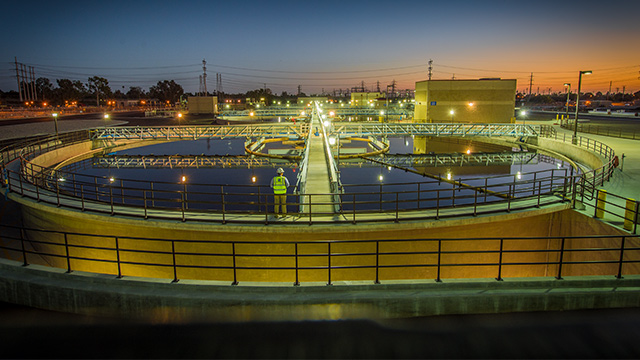Asset-intensive sectors, such as utilities, are seeking solutions to a number of interdependent and convergent challenges. These include increasing stakeholder and customer service expectations; ageing infrastructure; resilience of critical asset systems; and sustainability of capital funding.
These challenges have arguably increased over the last decade; however the approach to tackling them in recent years represents a new direction. The response has seen an increased implementation of asset management practices, management systems and frameworks.
The ISO 5500X suite of International Standards for Asset Management, released in January 2014, aims to provide “a management framework for the coordinated activity of an organisation to realise value from its assets in order to support the delivery of its strategic plan and objectives.” This briefing note seeks to provide an overview of the new standard and its implications for asset-intensive organisations worldwide.
Optimised Asset Management
In 2004, the Institute of Asset Management (IAM) developed PAS 55, the publicly available specification for the optimised management of physical assets, which was subsequently updated in 2008. As an asset management framework, PAS 55 has proven successful, with widespread adoption and has become the default international standard for asset management.
Yet for PAS 55 to be applicable to a broader range of organisations and the management of assets in its broadest sense, it was recognised that improvements were required, including:
- The need for a common asset management language so core asset management concepts were understood and translated internationally;
- The perception of a lack of applicability beyond large-scale utility and infrastructure companies and physical assets.
Using PAS 55 as a foundation, the International Organisation for Standardisation (ISO) has produced three new standards for asset management. These are intended to be equivalent to established management systems such as Quality Management (ISO 9001) and Environmental Management (ISO 14001), and comprise:
ISO 55000: Provides an overview of the principles, concepts, terms and definitions relating to assets, asset management and asset management systems;
ISO 55001: Specifies the requirements for the establishment, implementation, maintenance and improvement of a management system for asset management;
ISO 55002: Provides guidance for the application of an asset management system as laid out in ISO55001.
The fundamental objective of the standards is to guide and influence the design of an organisation’s asset management activities by embedding a number of key concepts and principles within the asset management system. These are:
- Value to the organisation and its stakeholders;
- Alignment and strategic planning for asset management;
- Leadership and culture, and assurance.
International development of the standards through ISO has resulted in a broad and common set of practices and terminologies that form the basis of a management system for asset management. This is likely to help address concerns about the wider applicability of PAS 55.
This also means that while the standard mainly applies to the management of physical assets, it is intended that it can be extended to other types of assets. For example, what is more valuable to an asset-intensive organisation, its physical asset base or its licence to operate? Can the service contracts between non-asset owning operator/service providers and the asset-owners now be considered as legitimate assets because value is derived by both parties from the contracts?
This broader scope of ISO 55001 and the more all-embracing definition of an asset are just some of the main differences between the international standard and PAS 55. Figures 1, 2, 3 and 4 explain in more detail the key differences and similarities.
Asset Management Organisations
The alignment between PAS 55 and ISO 55001 means transition should be reasonably straightforward for organisations advanced with PAS 55 implementation. As with PAS 55, mature asset management organisations embarking on formal certification for the first time will not struggle to achieve ISO 55001. However, the business case for transitioning between the two or targeting ISO 55001 over PAS 55 will have to be better articulated by the asset management community.
Working with asset management organisations globally, we often discover similar areas of weakness that impact on asset management maturity scores. These areas are also within the scope of ISO 55001. Organisations seeking to make asset management improvements while ensuring a solid base from which to pursue ISO 55001 or PAS 55 certification may wish to focus on these areas.
Common Areas for Improvement
- Development of a clear and concise asset management policy, strategy and approach to strategic planning;
- Defining levels of service and linking these to interventions and desired outcomes;
- Evidence of proactive external stakeholder engagement and management;
- Integrating outsourced activities with the asset management system;
- Implementing strategic and asset risk management and demonstrating its use in influencing asset management decision making;
- Business case development and integrated investment planning over multiple time horizons;
- Whole-life costing;
- Governance.
Like PAS 55, the standard will continue to help provide guidance on the right approaches, practices and processes to improve asset management capabilities. However, there should be a clear emphasis on a ‘Beyond ISO 55001 approach,’ whereby continuous improvement of the management system and asset management capabilities is actively sought.
Asset Management
An article in the IAM’s Assets magazine observed, “4,000 organisations were predicted to sign up to gain certification for ISO 55001 in the first five years after publication, compared with approximately 1,000 who signed up to PAS 55.” This represents opportunities and huge challenges for the asset management community.
Challenges include preventing ISO 55001 from becoming just a sought-after ‘badge’ and ensuring the competency and consistency of assessors. However, the standard is likely to add significant value to the field, especially in terms of increasing the exposure of asset management on the international stage. The same article notes the standard moves the discipline in a “more financial and strategic” direction, “while retaining the key tenets” of PAS 55.
Like PAS 55, the standard focuses on the ‘what’ part of an asset management system, not the ‘how-to.’ This ‘how-to’ information will still need to be provided from the large body of evidence, examples, cases studies and continual improvement gained from organisations that have implemented or are seeking to implement robust asset management practices.








